The AMD Radeon RX 5700 XT & RX 5700 Review: Navi Renews Competition in the Midrange Market
by Ryan Smith on July 7, 2019 12:00 PM ESTPower, Temperatures, & Noise
Last, but not least of course, is our look at power, temperatures, and noise levels. While a high performing card is good in its own right, an excellent card can deliver great performance while also keeping power consumption and the resulting noise levels in check.
| Radeon Video Card Voltages | |||||
| 5700 XT Max | 5700 Max | 5700 XT Idle | 5700 Idle | ||
| 1.2v | 1.025v | 0.725v | 0.775v | ||
Looking at boost voltages for AMD's new midrange 7nm cards, we don't have too many points of comparison right now. But still, with AMD's drivers reporting a maximum boost voltage of 1.2v for the 5700 XT, not even the incredibly juiced Polaris 30-based Radeon RX 590 took quite so much voltage. It may very well be that TSMC's high-performance 7nm process simply requires a lot of voltage here, but it may also be a sign that AMD is riding the voltage/frequency curve pretty hard to get those high clockspeeds.
By contrast, the 5700 (vanilla) is a much more mundane card. With its lower clockspeeds, the card never goes above 1.025v according to AMD's drivers. Which given the impact of voltage on power consumption, it's actually a bit surprising the spread is so large.
| Radeon Video Card Average Clockspeeds (Rounded to the Nearest 10MHz) |
|||
| Game | 5700 XT | 5700 | |
| Max Boost Clock | 2044MHz | 1750MHz | |
| Official Game Clock | 1755MHz | 1625MHz | |
| Tomb Raider | 1780MHz | 1680MHz | |
| F1 2019 | 1800MHz | 1650MHz | |
| Assassin's Creed | 1900MHz | 1700MHz | |
| Metro Exodus | 1780MHz | 1640MHz | |
| Strange Brigade | 1780MHz | 1660MHz | |
| Total War: TK | 1830MHz | 1690MHz | |
| The Division 2 | 1760MHz | 1630MHz | |
| Grand Theft Auto V | 1910MHz | 1690MHz | |
| Forza Horizon 4 | 1870MHz | 1700MHz | |
Meanwhile clockspeeds are also an interesting story. AMD said that they would no longer be holding back their chips' top boost clocks, and instead let the silicon lottery run its course, allowing the best chips to reach their highest clockspeeds. The end result is that our 5700 XT is allowed to clock up to 2044 MHz, 139MHz better than AMD's official Boost Clock metric guarantees. More to the point, this is a substaintial jump in frequency over both AMD's RX Vega and RX 500 series cards, which would top out around the mid-1500s.
That said, the 5700 XT doesn't have the TDP or thermal cap to susntain this; I couldn't actually hit 2044MHz even in LuxMark, which as a "light" compute workload tends to bring out the highest clockspeeds in processors. Instead, the best clockspeed I was able to hit was a bit lower, at 2008MHz. So while the silicon is willing, the physics of powering a Navi 10 at such high clockspeeds are another matter.
At any rate, even with TDP and cooling keeping the 5700 XT more down to earth, the card is still able to hit high clockspeeds. More than half of the games in our benchmark suite average clockspeeds of 1800MHz or better, and a few get to 1900MHz. Even The Division 2, which appears to be the single most punishing game in this year's suite in terms of clockspeeds, holds the line at 1760MHz, right above AMD's official game clock.
As for the 5700, with its more conservative TDP, clockspeed specifications, and likely some binning, the card doesn't reach quite as high. Its 1750MHz max boost clock is just 25MHz over AMD's guaranteed clock. Meanwhile its clockspeeds are overall a bit more densely packed than the 5700 XT's; all of our games see average clockspeeds between 1630MHz and 1700MHz.
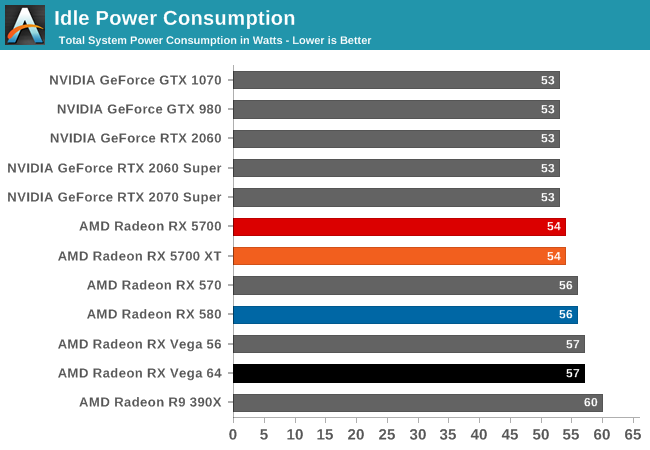
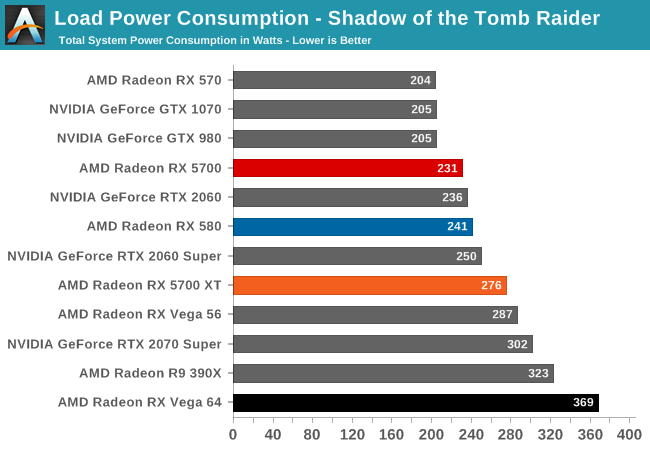
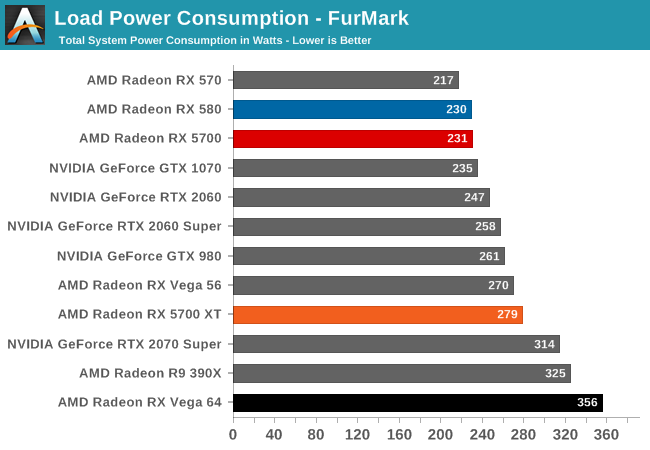


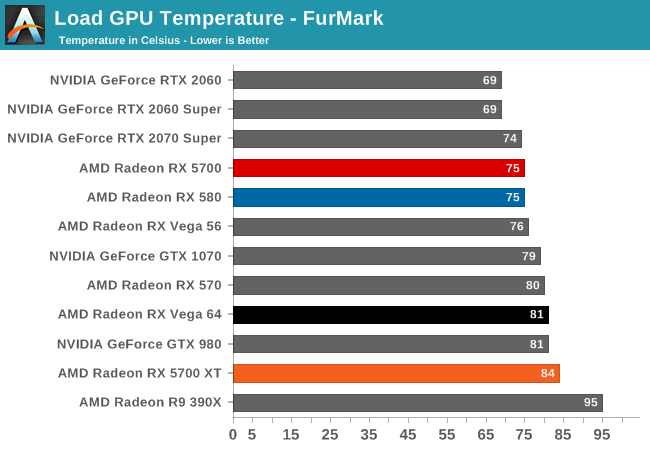
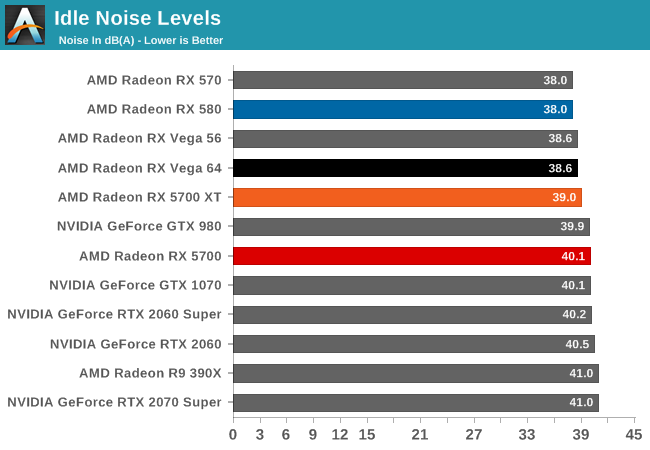
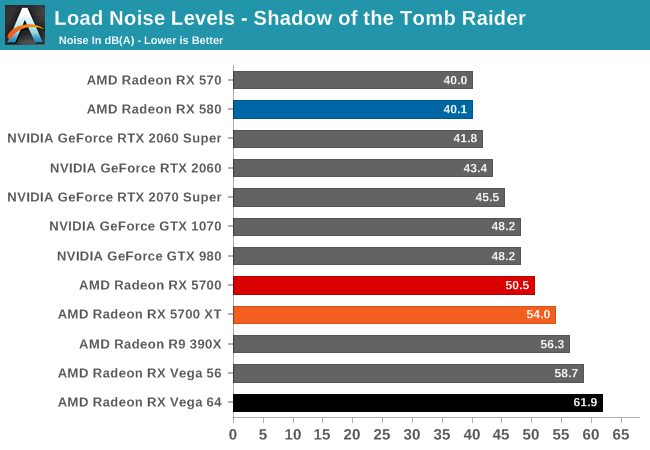
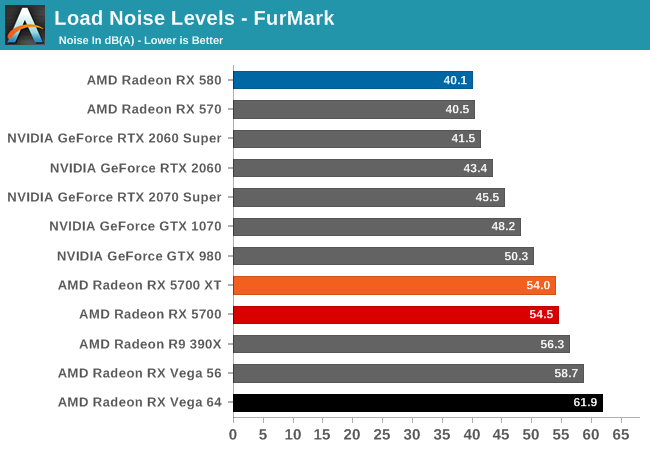










135 Comments
View All Comments
WaltC - Monday, July 8, 2019 - link
All FIXED--had to come back and correct the record. I used the "clean" install method from the 19.6.3's--and all is well so far with the 19.7.1's, I am delighted to say...;) Couldn't leave it hanging like that. I should have done that the first time, because it is a new driver set of greater size and feature support (for the 5700's)--yes, mea culpa! How many times is it the last thing I try that *works*? (utterly rhetorical)...Arrghghghg! Only thing out of the ordinary I saw were some funky desktop colors that vanished with the initial reboot after installation--running fine now!WaltC - Sunday, July 7, 2019 - link
Drivers need, it would seem.ksec - Sunday, July 7, 2019 - link
Thanks. It is good enough for me as it is. Technical Details could be another article. But the Number of Performance, Price in Percentage does the job.IGTrading - Sunday, July 7, 2019 - link
Thank you for the good work Ryan and thank you for not awarding some ridiculous silver "award" to Radeon of your colleagues did with Ryzen 3000 :)Ryan Smith - Sunday, July 7, 2019 - link
So it's noted, I'm the one that suggested the Silver award. I'm as equally culpable for that as I am the lack of an award here.jospoortvliet - Monday, July 8, 2019 - link
Fwiw both decisions were prudent if you ask me. Ryzen 3 changed the the entire direction CPU performance was taking - for over half a decade we had incremental improvements at best. Now the triplet price/performance/power is completely upended by the new generarion zen. While the new radeons are interesting they are nowhere near as market-moving...jakky567 - Sunday, July 7, 2019 - link
Does it have VP9 10 bit? I know Raven Ridge does. It's nice for YouTube hdr.Ryan Smith - Monday, July 8, 2019 - link
Yes.crashtech - Wednesday, July 10, 2019 - link
Well, the Compute portion is still bare-bones. Do these cards just not run on the omitted applications?alfatekpt - Wednesday, October 23, 2019 - link
Why no 1660 TI included in this benchmark?